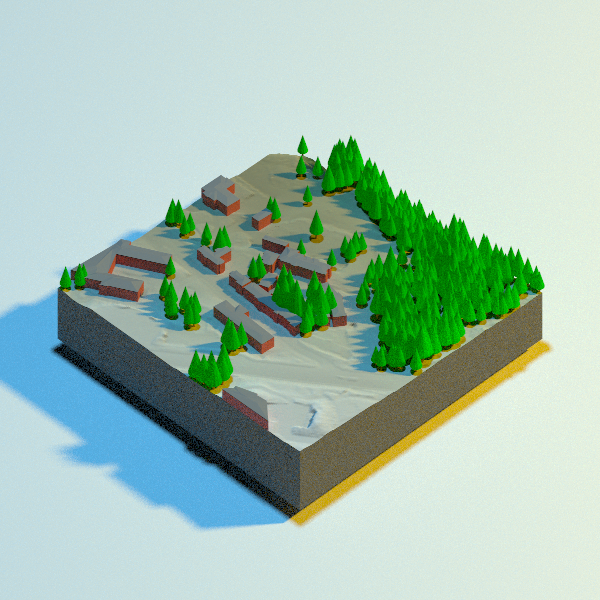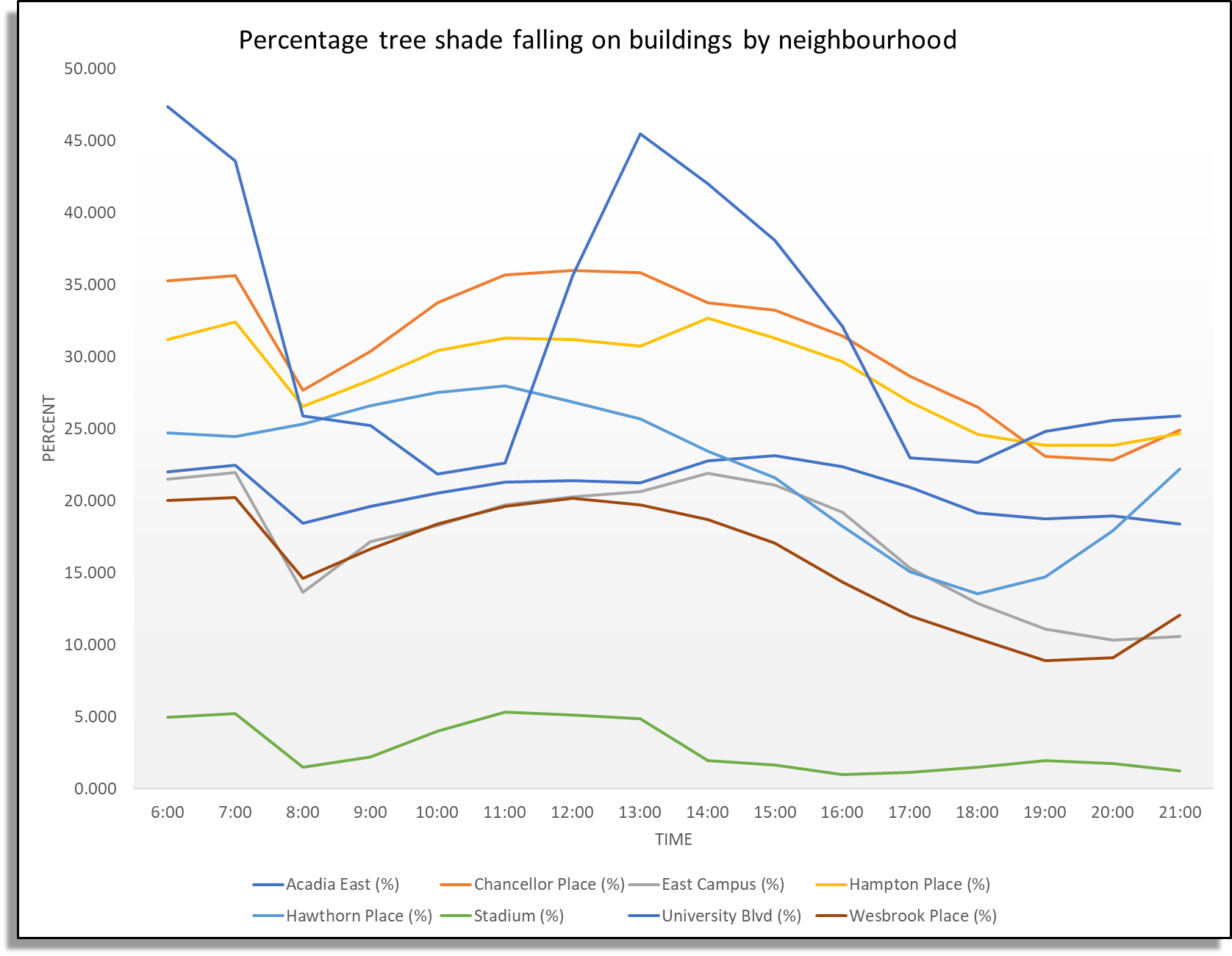Project Deliverables
Project 1 - Modelling Tree Shade Coverage

Tree Shade in UBC Neighbourhoods
Assessing the percentage of tree shade per neighbourhood that falls on buildings.

Example hourly tree shade from sunrise to sunset in Chancellor Place neighbourhood on a scale of 0 to 1, 0 being full shade.

Percentage of tree shade falling on buildings per neighbourhood, hourly from sunrise to sunset.
Individual Tree Shade
Isolating the shade of individual trees for a species level analysis. Beginning from a point cloud clipped to a species of interest, ending with a shade model for a specific tree.
Scroll to zoom. Left-click to rotate.
Interactive point cloud for one area of interest filtered to display trees only.